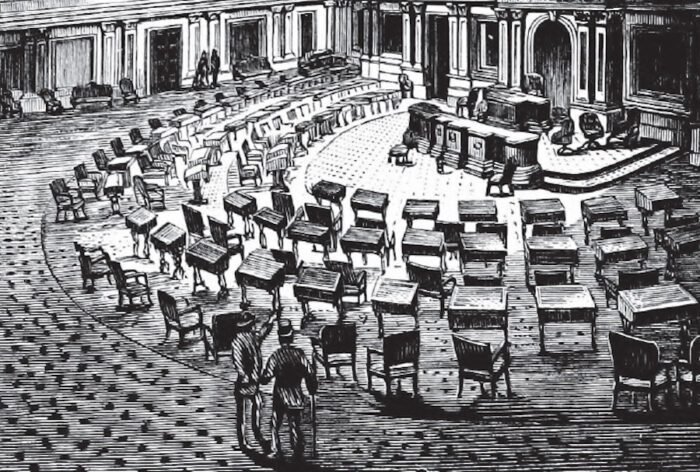
Last week, I introduced Mary Clemmer Ames, long-time Capitol Hill resident, and mentioned some of her books. Today, I want to look at one that still contains information of interest today: Ten Years in Washington: Life and Scenes in the National Capital, As a Woman Sees Them. The book is copyrighted 1873, and was republished multiple times over the next few years. In between, she divorced her husband. While the book was published under her married name, she did eventually reclaim her original name, so I will be using that throughout.
The book starts with several chapters on the history of the city. Clemmer clearly did her research, quoting letters written to her by eminent historians at the time about various aspects of the city’s creation. It ends with the argument that the Civil War, finally, made Washington truly the “Capital of the Nation.”
The more interesting part of the book is that which represents her own view of the city, It begins “And now! The citizen of the year of our Lord 1873 sees the dawn of that perfect day of which the founders of the Capital so fondly and fruitlessly dreamed. The old provincial Southern city is no more. From its foundations has risen another city, neither Southern nor Northern, but national, cosmopolitan.”
I could continue on in this vein, simply quoting large segments of her prose, but will try to concentrate on those parts that are relevant to Capitol Hill. In this case, it is mainly the Capitol itself: Finally completed during the Civil War, it dominates the skyline of not only the neighborhood expanding rapidly eastward, but the whole city.
The first thing she points out is that from “the beginning the Capitol has suffered as a National Building from the conflicting and foreign tastes of its decorators.” She is particularly savage about the “mythological bar-maids, misnamed goddesses, [who] dance in the most conspicuous and preposterous places.” While Congress had as far back as 1859 attempted to rectify the mishmash of decoration, Clemmer felt that the attempts by a commission to do so had, thus far, abysmally failed.
Once she has this out of her system, Clemmer becomes a much more amenable guide:
Come with me. This is your Capitol. It is like passing from one world into another, to leave behind the bright June dy for the cool, dim halls of the lower Capitol. No matter how fiercely the sun burns in the heavens, his fire never penetrates the twilight of this grand hall, whose eight hundred feet measure the length of the Capitol from end to end.

She then takes the visitor on through the building, eventually arriving in the Senate chamber, wherein, under the lax leadership of Vice President and President of the Senate Schuyler Colfax (seen above), the proceedings seem to have lost some of its decorum:
As the President of the Senate seldom listened to a speaker, the Senators as rarely took the trouble to listen to each other. The question discussed might be of the gravest import to the whole nation, the speaker’s words, to himself, might be of the most tremendous importance to the national weal, just the same he had to empty them upon vacancy, speaking to nothing in particular, while the Vice-President looked another way, and his colleagues went on scribbling letters, whispering political secrets to each other, munching apples in the aisles or smoking in the open cloak-rooms, with feet aloft.
Clemmer ends this section by writing that new Vice President and President of the Senate Henry Wilson had already changed the tone of the Senate by the simple expedient of actually listening to what was being said on the floor.
Next week: Our tour of the Capitol continues.
